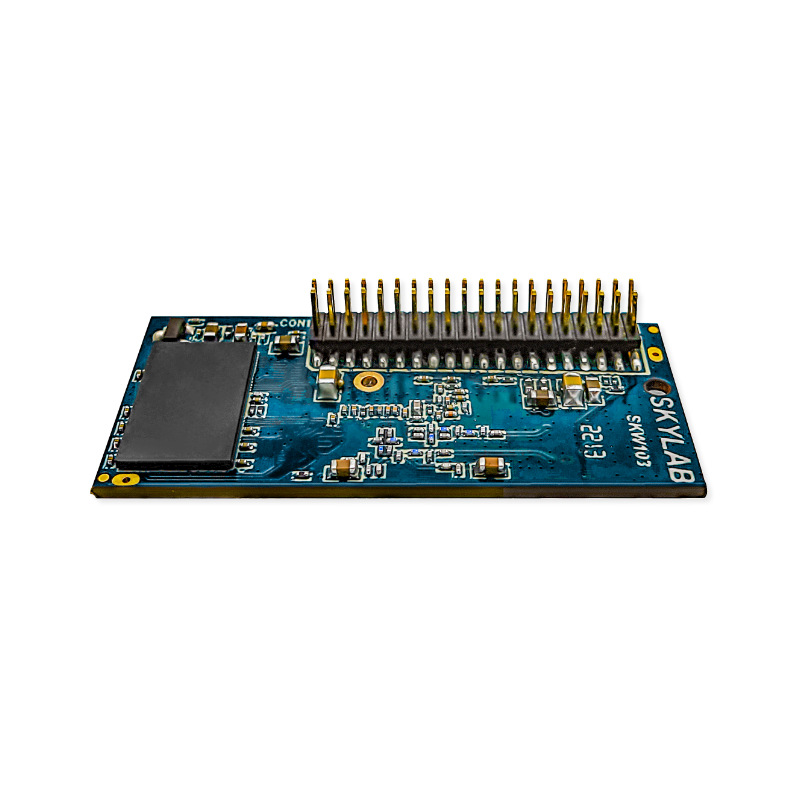The WiFi module SKW103 can effectively assist devices in completing information collection and data uploading, meeting the low-power, low-cost automation and sensor solution WiFi module requirements of the Internet of Things.

The data collected by the module is directly transmitted to the terminal through the serial port, or uploaded directly to the cloud. Users can access the system platform to retrieve data information, identify and verify the data, and correspond all data to device names one-to-one, reducing the probability of errors caused by manual on-site information collection.
SKW103 is a WiFi module developed based on Qualcomm's QCA9531 solution, which has the following characteristics:
1. Highly integrated: includes 802.11n MAC and baseband, 2.4GHz radio and FEM, 650MHz MIPS CPU, 2-port 10/100 fast Ethernet switch.
2. Low power consumption: Only requires an external 3.3V power supply, with low power consumption and low heat generation during operation.
3. Small size: Adopting pin packaging, the size is 41.2 * 18.5 * 9.0 (mm).
4. High performance: Supports 802.11n operation on 20 MHz and 40 MHz channels up to 144Mbps and 300Mbps respectively, as well as IEEE 802.11b/g data rates.
5. Memory scalability: DDR2 memory can reach up to 1024Mb, and Flash memory can scale up to 256Mb.
6. Multiple working modes: supports bridge mode, AP client mode, and gateway mode.
7. Rich interfaces: 1 LAN interface and 1 WAN interface, can be used for different applications according to different interfaces, supporting AP/Client/Router mode.
8. Stable and reliable: Designed according to industrial standards, with stable performance and reliable quality.
The SKW103 module is suitable for various application scenarios such as the Internet of Things, industrial control, smart home, building automation, wireless video transmission, etc. It can provide efficient, stable, and reliable wireless network connection and data transmission services for these fields.
The working principle of the WiFi module mainly includes the following steps:
1. Signal reception: The module receives RF signals sent by wireless network devices (such as wireless routers).
2. Demodulation: Demodulate radio frequency signals into digital signals.
3. Processing: Decoding and processing digital signals to extract useful information, such as data packets.
4. Transmission: The processed information is transmitted to the connected devices through the internal circuits of the module.
5. Feedback: The device encodes and modulates the data that needs to be sent through a WiFi module, converts it into an RF signal, and sends it out.
Prev:UWB prevents collisions between construction personnel and machinery
Next:What are ultra wideband UWB antennas and what are the main types of UWB antennas
Copyrights© Shenzhen Skylab Co.,LTD All Rights Reserved.

